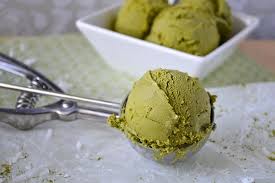
Fantastic buttery gluten-free pastry for pies, tarts and mince pies
This pastry with its rich butteryness will give you an “I can’t believe it’s not normal pastry” moment. This pastry works brilliantly for an apple tart, a steak and kidney pie or your Christmas mince pies. The original recipe ( by Elizabeth Barbone on seriouseats.com) used sorghum flour which gives the best texture. I’m using this to make mince pies this year and instead of a pastry lid will sprinkle on my (Gluten-free) Crumble topping for mince pies (also on this blog).
Makes 1 large 28cm tart (with pastry base and lid) or two tart bases or steak and kidney pie tops (for a pie to serve 4). The pie in the picture has myself and my husband’s initials on it (in case you were wondering).
75g millet flour
75g sorghum flour (if you can’t get this use brown rice flour)
55g oat flour (I make this by blitzing gluten-free oats in my coffee grinder or mini food processor)
1 rounded teaspoon xanthan gum
225g butter, cut into small pieces
2 tablespoons xylitol (only if you want a sweet crust – personally I don’t like sweet pastry)
3 to 8 tablespoons water
A little flour for rolling out: white rice flour or tapioca flour work well, or use a commercial gluten-free flour blend.
Food processor method:
In the bowl of a food processor, combine dry ingredients. Pulse to combine. Add butter. Pulse to combine. No large pieces of butter should remain. This takes about ten short pulses. Transfer mixture to large mixing bowl. Add 3 tablespoons water and stir, using a wooden spoon. If mixture is dry, add more water, one tablespoon at a time.
By hand method:
Whisk together dry ingredients in large bowl. Add butter. Using either your hands or a pastry cutter, cut butter into flour mixture until no large pieces of butter remain. Add 3 tablespoons water and stir, using a wooden spoon. If mixture is dry, add more water, one tablespoon at a time.
To make a tart or pie base or lid:
Divide dough in half and wrap with plastic wrap. Chill for one hour. Remove crust from the refrigerator and allow to come to almost room temperature. Cut two pieces of parchment 12 by 18-inches. Lightly flour one piece of parchment, silicon or greaseproof paper with white rice flour. Center the dough on the paper. Generously flour the top of the dough. Roll dough into a large circle, about 11-inches. Invert the pie plate over the dough. Slide your hand between the counter and the parchment paper. Place your other hand on the bottom of the pie pan. In one quick motion, flip the dough and pan over. Press dough into the pan. Carefully pull the paper off the dough. If any of the dough rips apart, press it back together. Trim edges, crimp if desired. For a double crust pie, repeat process. Quickly flip rolled out dough onto the top of filled pie or roll dough around the rolling pin and transfer it to the top of the pie. Bake pie at the time and temperature the pie recipe directs.
Unlike normal delicious pastry, this uses all wholegrains so is packed with minerals and vitamins. If you want lots of energy and vitality, keep grains and other starchy carbs (eg potatoes) to no more than 25% of your lunch and dinner. Half your plate will be non-starchy veg if you want lots of energy, clear skin and a slim shape. Because of the huge amount of butter, this pastry is intended as a treat, not a daily staple.

